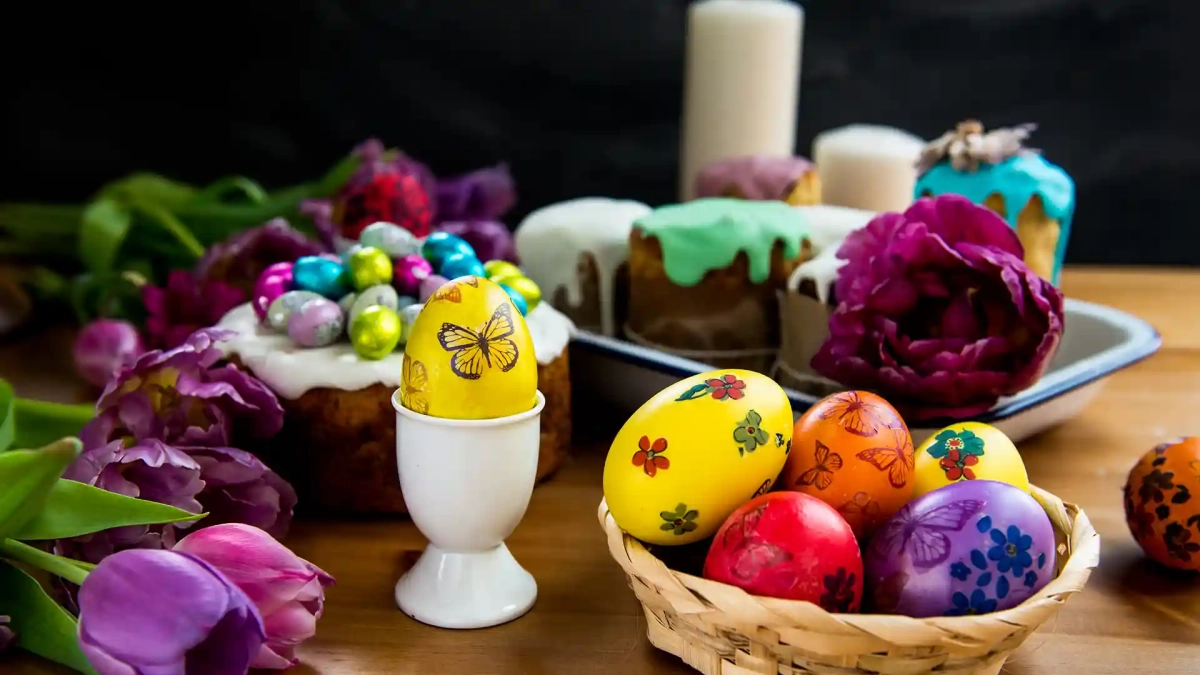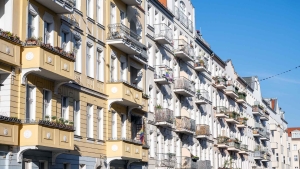Easter in Germany: A Comprehensive Guide for Foreigners and Newcomers
- Easter in Germany: A Comprehensive Guide for Foreigners and Newcomers
- How is Easter in Germany?
- German Easter Traditions
- Cultural Origins and History of Easter
- Regional Easter Differences in Germany
- Easter in Nature
- Practical Tips for Easter in Germany
- Easter Foods to Try
- Easter Crafts
- Activities for Families and Newcomers
- Easter for Tourists
- Easter Songs and Stories
- Comparison with Other Countries
- Sustainability in Easter Traditions
- Easter Fun Facts
- Must-See Easter Events in Germany
Easter is one of the most cherished holidays in Germany, celebrated between late March and April. In 2025, Easter Sunday falls on April 20, steeped in traditions, family gatherings, and delightful springtime festivities. For newcomers and foreigners, experiencing Easter in Germany can be both fascinating and a bit puzzling. From its religious significance to quirky customs, regional differences, and practical tips for navigating the holiday season, here is everything you need to know.
How is Easter in Germany?
Easter, or Ostern in German, celebrates the resurrection of Jesus Christ and marks the culmination of Holy Week. It is a movable feast, with the main celebrations taking place on Easter Sunday (Ostersonntag) and Easter Monday (Ostermontag), though preparations and traditions start well before these dates.
The holiday is not only a religious event but also a cultural one. Even if you’re not religious, you’ll find plenty to enjoy, from colorful markets and egg hunts to delicious treats and extra days off.
German Easter Traditions
Easter Eggs and Decorating (Ostereier)
Eggs symbolize new life, and decorating them is one of the most beloved traditions in Germany. Families, schools, and community centers get together to paint and dye eggs in bright colors and intricate patterns. You can even find hand-painted eggs sold at Easter markets.
In some regions, eggs are hung from trees or bushes, creating a stunning Ostereierbaum (Easter Egg Tree). Thuringia’s Saalfeld is famous for its elaborate egg tree displays.
The Easter Bunny (Osterhase)
The Easter Bunny, or Osterhase, is a central figure in German Easter celebrations. Children eagerly await the bunny, who hides chocolate eggs, candies, and small gifts in gardens or around homes. The excitement of the egg hunt, or Eiersuche, makes Easter morning magical for families.
Easter Fires (Osterfeuer)
An ancient tradition with pagan roots, Easter fires are lit in many parts of Germany, especially in northern regions like Lower Saxony and Schleswig-Holstein. These large bonfires symbolize the end of winter and the arrival of spring. Families and communities gather around to enjoy the warmth and festive atmosphere.
Palm Sunday and Good Friday (Palmsonntag und Karfreitag)
Holy Week begins with Palm Sunday, commemorating Jesus’ entry into Jerusalem. On Good Friday (Karfreitag), a solemn day in Germany, many Christians attend church services. Good Friday is a public holiday in all states, and some restrictions apply—for instance, dancing is prohibited (a rule known as Tanzverbot) in most areas.
Easter Markets (Ostermärkte)
Much like Christmas markets, Easter markets pop up in towns and cities across Germany. These markets offer handmade crafts, decorated eggs, spring flowers, and seasonal foods. Popular Easter markets can be found in cities like Nuremberg, Munich, and Stuttgart.
Easter Lamb (Osterlamm)
Symbolizing Jesus as the Lamb of God, the Easter lamb is both a religious icon and a delicious treat. Many Germans bake lamb-shaped cakes dusted with powdered sugar. You can find these cakes at bakeries or make your own using a traditional lamb cake mold.
Cultural Origins and History of Easter
Pagan Roots of Easter Traditions
Many Easter customs in Germany, such as the Easter Bunny and egg symbolism, have origins in pre-Christian pagan festivals that celebrated the arrival of spring and new life. These traditions were later incorporated into Christian practices.
Christian Significance
Easter is the most important holiday in the Christian calendar, marking Jesus Christ’s resurrection. Over the centuries, Germany’s predominantly Christian population developed unique ways of celebrating this event.
Regional Easter Differences in Germany
Bavaria
In Bavaria, Easter traditions have a strong Catholic influence. Churches are beautifully decorated, and processions such as the Osterprozession are held. One unique tradition is the blessing of food baskets, which contain bread, eggs, and other Easter delicacies.
Lower Saxony and Schleswig-Holstein
These northern regions are known for their spectacular Osterfeuer (Easter Fires). Villages compete to create the largest bonfire, drawing locals and visitors alike to enjoy the festive atmosphere.
Thuringia
Thuringia takes pride in its Easter Egg Trees (Ostereierbäume). The Saalfeld Easter Egg Tree, adorned with thousands of painted eggs, has become a tourist attraction.
Saxony
In Saxony, the Sorbian community celebrates Easter with unique traditions such as egg rolling and intricate egg painting. The Sorbian eggs are true works of art, featuring detailed patterns created with wax.
Berlin and Urban Areas
In urban centers like Berlin, Easter is a mix of traditional and modern. Families may partake in egg hunts, but you’ll also find contemporary celebrations, such as Easter-themed parties and brunches at trendy cafes.
Easter in Nature
Easter in Germany coincides with the arrival of spring, making it a popular time for outdoor activities. Germans often use the holiday to:
- Go hiking or cycling in scenic regions like the Black Forest or Bavarian Alps.
- Have picnics in local parks or by lakes, enjoying the mild spring weather.
- Visit botanical gardens or tulip festivals that celebrate springtime blooms.
Practical Tips for Easter in Germany
Public Holidays and Closures
Easter Sunday and Monday are public holidays, and many businesses, shops, and even some restaurants will be closed. Good Friday is also a public holiday nationwide. Plan ahead by stocking up on groceries and essentials before the long weekend.
Travel During Easter
The Easter holiday is a popular time for travel, both domestically and internationally. Trains and highways can be crowded, so book tickets in advance if you plan to travel. Many Germans take advantage of the time off to visit family or go on short vacations.
Tanzverbot (Dancing Ban)
In some states, dancing and loud music are prohibited on Good Friday as a mark of respect. Be mindful of local regulations if you’re planning to attend parties or events.
Easter Foods to Try
German Easter is as much about food as it is about tradition. Here are some seasonal specialties to look out for:
- Osterbrot: A sweet bread made with raisins, almonds, and often dusted with powdered sugar.
- Easter Lamb Cake (Osterlammkuchen): A light sponge cake baked in the shape of a lamb.
- Egg Dishes: From deviled eggs to salads, eggs are a staple on Easter tables.
- Asparagus (Spargel): The Easter season coincides with the beginning of asparagus season, and Germans love their white asparagus, served with hollandaise sauce.
Easter Crafts
DIY Egg Decorating
Learn how to decorate eggs using traditional German techniques, including wax-resist painting and natural dyes made from vegetables like beetroot or turmeric.
Ostereierbaum (Easter Egg Tree)
Create your own Easter egg tree by hanging painted eggs on branches, a delightful way to bring the holiday spirit into your home.
Activities for Families and Newcomers
Egg Hunts and Crafts
Join local egg hunts or organize your own. Many towns host family-friendly events, and parks provide the perfect setting for Easter activities.
Visit an Easter Market in Germany
Explore the festive atmosphere of an Easter market. These markets are a great place to buy unique souvenirs and enjoy traditional German snacks.
Attend an Osterfeuer
If you’re in northern Germany, don’t miss the chance to witness an Osterfeuer. It’s a memorable way to experience German culture and meet locals.
Bake Easter Treats
Get into the festive spirit by baking your own Easter lamb cake or decorating cookies shaped like bunnies and eggs.
Easter for Tourists
If you’re visiting Germany during Easter, consider these tips:
- Plan visits to major Easter markets in cities like Munich or Stuttgart.
- Check local schedules for Easter processions or church services to experience the holiday’s cultural and religious significance.
- Be mindful of public transport schedules, which may vary on holidays.
Easter Songs and Stories
Traditional Easter Songs
In churches and schools, Easter songs celebrating renewal and resurrection are often sung. Learning a few lines can help you connect with the culture.
Easter Tales
German folklore features charming tales of the Easter Bunny and its adventures. These stories are often shared with children during the holiday season.
Comparison with Other Countries
How Does Germany Differ?
Easter in Germany tends to emphasize tradition and family gatherings more than commercialism compared to some countries like the USA. Egg-decorating and markets take center stage, while elaborate parades and performances are less common.
Sustainability in Easter Traditions
Eco-Friendly Practices
Many Germans prioritize sustainability during Easter. Consider:
- Using biodegradable or reusable materials for decorations.
- Opting for locally-sourced and organic chocolate eggs.
- Repurposing Easter decorations year after year.
Easter Fun Facts
- Germany produces millions of chocolate bunnies every Easter, with Lindt being a top brand.
- The Saalfeld Easter Egg Tree holds a record with over 10,000 decorated eggs.
- White asparagus, often called “white gold,” becomes a culinary highlight during Easter.
Must-See Easter Events in Germany
- Thuringia’s Easter Egg Tree: Visit the famous Saalfeld Easter Egg Tree adorned with thousands of hand-painted eggs.
- Munich’s Easter Market: Held at Marienplatz, this market features handmade crafts, live music, and traditional foods.
- Oberammergau’s Passion Play: Although it’s held every ten years, the passion play is a monumental Easter event in Bavaria.
- Berlin Easter Parade: A modern take on Easter celebrations with street performers and family-friendly activities.
Easter in Germany is a delightful blend of tradition, community, and seasonal cheer. Whether you’re painting eggs, enjoying an Osterfeuer, or indulging in Easter lamb cake, there’s something for everyone to enjoy. For newcomers and foreigners, it’s a chance to immerse yourself in German culture and create lasting memories.
So, grab your basket, hunt for some eggs, and don’t forget to say “Frohe Ostern!” (Happy Easter!) to everyone you meet!
How informative was this article?
Click on a star to rate it!
We are sorry that this post was not useful for you!
Let us improve this post!
What is missing in the article?















